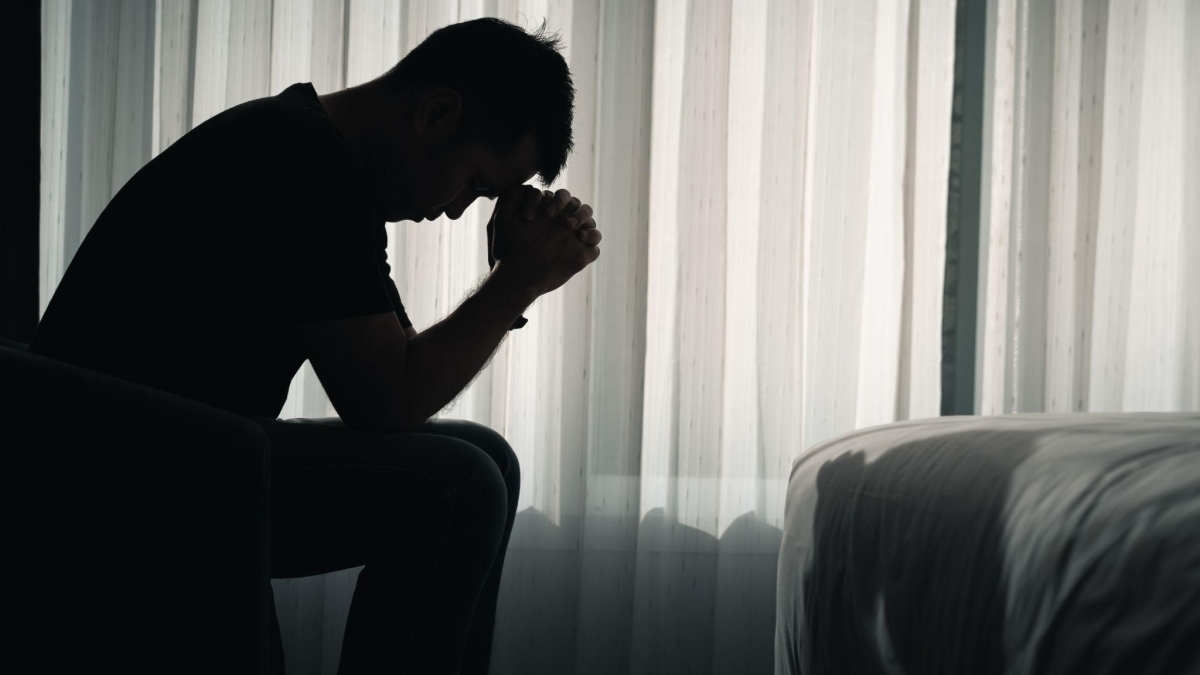Decades ago, many Americans without a college degree could earn a good enough living from working-class jobs requiring little education. But that’s changed — and it may be contributing to mass heartbreak.
As the economic fortunes of the working class have continued to shift, deaths from accidental drug overdose, self-harm and alcohol-related diseases (labeled “deaths of despair” by researchers Anne Case and Angus Deaton) have risen sharply for one demographic in particular: white Americans without a four-year college degree.
But are these factors genuinely related?
Eric Bjorklund, a researcher at Arizona State University's T. Denny Sanford School of Social and Family Dynamics, investigated to find out. In a research article published in the journal Social Science & Medicine this September, Bjorklund found that economic precarity, opioid accessibility and white working-class population size are all associated with higher rates of county-level deaths of despair.
Specifically, his analysis shows that each factor has a strong association with local death rates. But, perhaps most importantly, he also uncovers several ways these elements interact with one another.
“There is a complex and interactive relationship between economic struggle, the white working class and opioids,” Bjorklund says. “Particularly notable is that opioids and economic precarity appear to jointly exacerbate death rates within highly concentrated white working-class areas, especially among men.”
Bjorklund, who specializes in the social determinants of mortality, found these results by pulling data from International Classification of Diseases (ICD) codes in mortality reports from the Centers for Disease Control and Prevention. Data spanned from 2012 to 2016, key years of prevalent drug use and deaths of despair.
Measuring by county, Bjorklund analyzed the interactions of opioid access and economic precarity, the latter of which he measured based on factors such as unemployment, poverty level, rent-to-income ratio and government assistance. He used the definition of white working class commonly used in this literature, which is “non-Hispanic whites with less than a four-year college degree.” The results highlight an interactive and complex relationship between this demographic and concerning public health trends.
A rising and complicated issue
Economic difficulties and deaths of despair are not a new trend in America, with other demographics and geographic regions — Native Americans in certain pockets of the West, for example — having struggled for generations. Researchers are finding that the sharp and distinct increase among the white working class, however, is notable. Other demographics and even other industrialized countries have not seen the same increase over the same time period despite facing similar challenges.
Researchers have increasingly investigated the connection between socioeconomic struggle and deaths of despair. And while evidence shows economic insecurity is connected to high levels of stress and reduced physical and mental health, there is no conclusive evidence showing the compounding effects of other social or behavioral factors.
Often, existing research blames the issue on one cause or another, taking a simplified approach. Bjorklund says it’s not that cut and dry.
“What my research shows is that deaths of despair are an epidemic that can’t be explained by simple factors like drug access, or solved by simple solutions like increasing the number of jobs,” Bjorklund says. “Something more complex is unfolding within large white working-class communities, and it involves more than just macro-economic conditions, regional factors or drug supply dynamics.”
Although not a primary focus of the study (yet accounted for as a potential confounder), Bjorklund mentions that declining engagement with social institutions could also play a role in these deaths. Those struggling financially often experience community isolation and social deterioration, which researchers have shown are in decline among this demographic. All of these factors together create less-than-ideal circumstances for living a happy, healthy life.
Bjorklund acknowledges that his current study has its limitations and should be understood as only county-level associations. He would like to see future research include more recent data and consider the effects of social safety net policies. There is also recent research exploring the sociology of whiteness, self-harm and economic expectations, which are all mechanisms that could play a role.
Bjorklund dedicated this research to his mother, Shawna Aline Ervin (July 12, 1961–December 27, 2009), who he describes as a fallen, but not forgotten, soul of the opioid crisis.
More Arts, humanities and education

Upcoming exhibition brings experimental art and more to the West Valley campus
Ask Tra Bouscaren how he got into art and his answer is simple.“Art saved my life when I was 19,” he says. “I was in a…

ASU professor, alum named Yamaha '40 Under 40' outstanding music educators
A music career conference that connects college students with such industry leaders as Timbaland. A K–12 program that…

ASU's Poitier Film School to host master classes, screening series with visionary filmmakers
Rodrigo Reyes, the acclaimed Mexican American filmmaker and Guggenheim Fellow whose 2022 documentary “Sansón and Me” won the Best…


